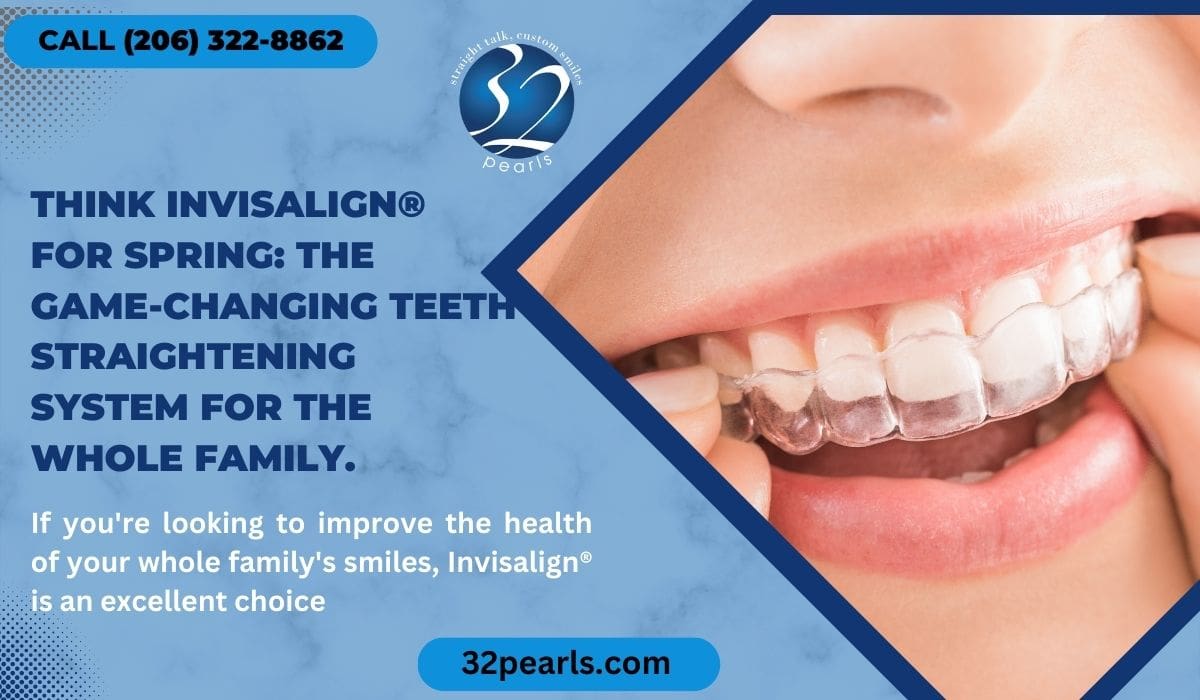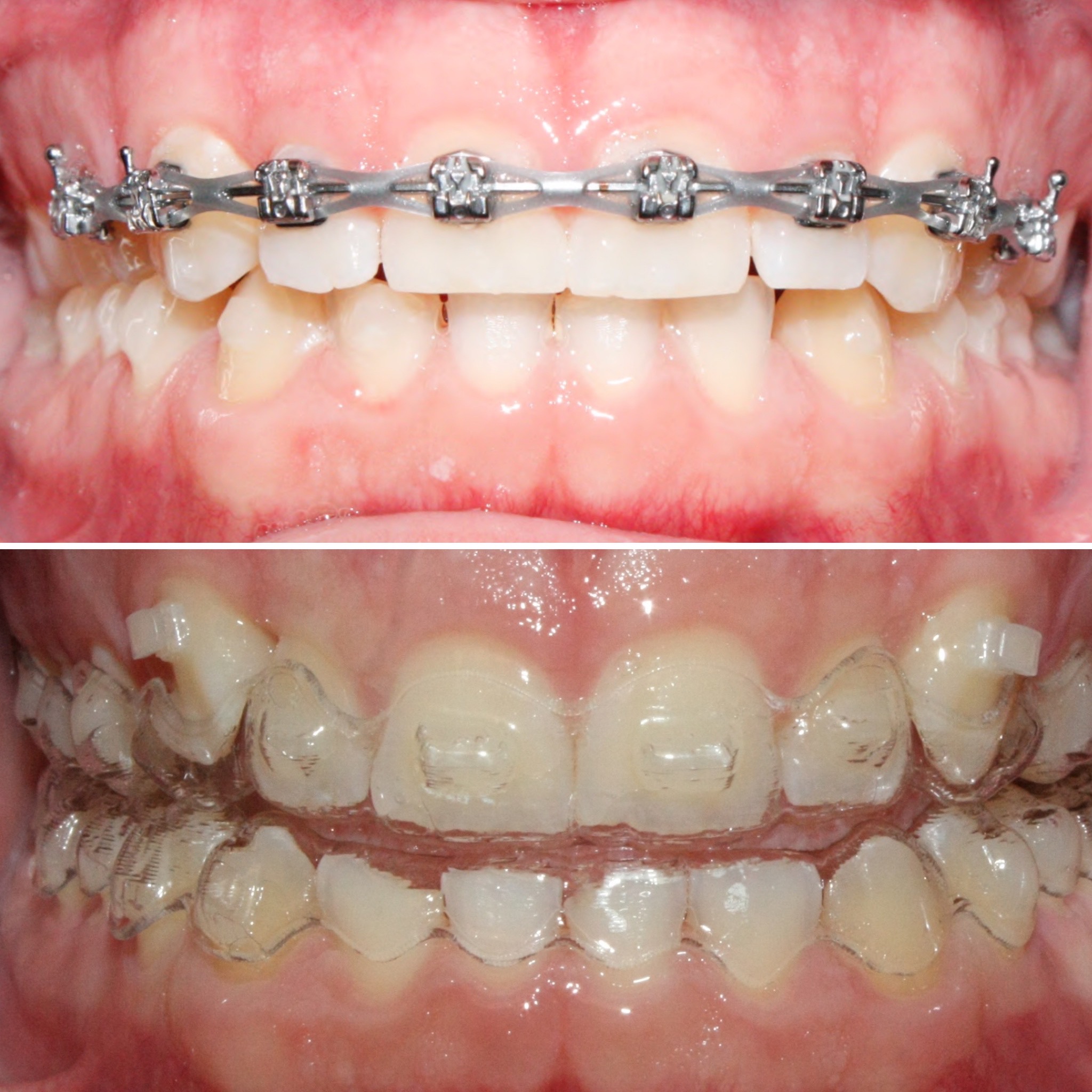Top Factors to Select Invisalign Over Other Orthodontic Treatments
Top Factors to Select Invisalign Over Other Orthodontic Treatments
Blog Article
Invisalign vs. Standard Braces: Which Option Is Right for You?
When considering orthodontic therapy, the option in between Invisalign and typical braces offers a number of important variables that merit mindful examination. Invisalign provides a discreet choice with removable aligners, while typical dental braces offer an extra visible yet reliable solution for extreme misalignment. Each option includes distinct advantages and downsides connected to aesthetic appeals, convenience, therapy period, and price. Recognizing these nuances is critical for making an educated choice that straightens with your personal preferences and way of living. The question remains: which choice will ideal meet your orthodontic requirements and assumptions?
Introduction of Therapy Alternatives

On the other hand, conventional dental braces are composed of steel brackets and cords that are bonded to the teeth. This technique uses continuous pressure with time to achieve placement. While effective for complex orthodontic concerns, typical braces need normal brows through for adjustments and can present difficulties in preserving dental health due to the difficulty of cleaning up about wires and brackets.
Both choices have their qualities, and the option often depends upon particular dental problems, way of living preferences, and person compliance. Ultimately, seeking advice from an orthodontic specialist is crucial for determining one of the most ideal therapy strategy customized to specific requirements. Recognizing the subtleties of each choice can significantly affect the total success of orthodontic treatment.
Aesthetic Considerations
A substantial aspect affecting the option between Invisalign and standard braces is the visual appeal each therapy offers. Invisalign aligners are crafted from clear plastic, making them basically unseen when used.
In comparison, standard braces are composed of metal braces and cables, which can be extra visible. While advancements in orthodontic innovation have actually caused the development of smaller sized braces and colored elastics, conventional dental braces still maintain an even more obvious profile. For some people, the presence of braces might deter them from looking for essential treatment.
Eventually, the selection between Invisalign and standard braces may rest on personal preferences regarding aesthetics. People who prioritize discernment frequently favor Invisalign, while those who are much less worried concerning visibility may choose standard dental braces. Understanding the visual effects of each alternative is important for making an educated choice that aligns with one's lifestyle and preferences.
Convenience and Convenience

In terms of comfort, Invisalign aligners are detachable, enabling individuals to appreciate their favored foods without limitation and keep optimal dental hygiene. Brushing and flossing are streamlined, as the aligners can be obtained during these routines, whereas traditional dental braces require careful navigating around braces and cords.
In addition, Invisalign's dynamic system permits less orthodontic visits. People generally obtain numerous sets of aligners at the same time, which can improve the treatment procedure and lower time invested in the orthodontist's chair. On the other hand, conventional braces demand routine modifications, making them why not try these out less practical for those with active schedules. Invisalign. Overall, the convenience and benefit of Invisalign make it an appealing selection for lots of individuals looking for orthodontic treatment.
Treatment Period and Efficiency
While both Invisalign and conventional dental braces work in correcting oral misalignments, the period of treatment can differ substantially in between both alternatives. Normally, Invisalign treatment can take anywhere from 12 to 18 months, relying on the complexity of the instance. The clear aligners work by gradually changing teeth into their preferred placements, and regular follow-ups with an orthodontist assistance make certain progression remains on course.
In Website contrast, standard dental braces commonly require a longer commitment, usually varying from 18 months to 3 years. This is due to their fixed nature and making use of braces and cords, which can be much more efficient for intricate cases and serious imbalances (Invisalign). The treatment efficiency of standard dental braces is well-documented, as they permit for specific adjustments and greater control over tooth movement
Eventually, the choice between Invisalign and conventional braces might pivot on both the anticipated therapy duration and the particular oral concerns at hand. Consulting with an orthodontist is important, as they can provide tailored recommendations based upon specific demands, ensuring the picked technique lines up with desired durations and results.
Expense Contrast and Insurance Options
Price plays a substantial duty in the decision-making procedure for people taking into consideration orthodontic treatment, whether going with Invisalign or traditional dental braces. Usually, the cost of Invisalign ranges from $3,000 to $8,000, while standard braces commonly cost in between $2,000 and $6,000. Factors affecting these expenses consist of the intricacy of the case, the period of treatment, and geographical location.
Insurance insurance coverage can substantially affect out-of-pocket expenditures. Lots of dental insurance plans provide partial protection for orthodontic treatments, yet the specifics can vary extensively. It is vital for people to evaluate their insurance plan to figure out the extent of protection for either alternative. Normally, conventional dental braces may be a lot more regularly covered by insurance strategies contrasted to Invisalign, which some Click Here insurers classify as an aesthetic procedure.
Additionally, a number of orthodontic methods use adaptable payment plans, making both treatment alternatives extra available. Individuals must ask about possible financing choices and discount rates for ahead of time settlements. Reviewing the complete price, including insurance policy advantages and settlement strategies, is crucial for making an informed decision that aligns with both aesthetic choices and budget plan factors to consider.

Verdict
In summary, the choice in between Invisalign and conventional dental braces depends upon multiple aspects, including aesthetic choices, comfort, therapy period, and expense. Invisalign offers a discreet, detachable option that facilitates oral health and dietary versatility, while traditional dental braces might be extra appropriate for intricate dental problems and frequently come with a lower cost point. Inevitably, examination with an orthodontist is vital to examine individual situations and establish the most proper treatment alternative for achieving ideal oral alignment.
When thinking about orthodontic therapy, the selection in between Invisalign and traditional braces provides numerous vital factors that merit cautious examination.Contrasting Invisalign and traditional braces exposes unique therapy alternatives for orthodontic correction.While both Invisalign and standard braces are efficient in remedying oral imbalances, the period of therapy can differ dramatically in between the two options.Cost plays a considerable role in the decision-making process for individuals considering orthodontic treatment, whether choosing for Invisalign or typical dental braces.In recap, the option in between Invisalign and traditional dental braces hinges on several aspects, consisting of aesthetic choices, comfort, treatment period, and cost.
Report this page